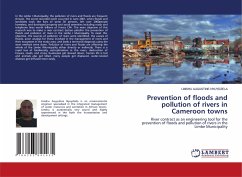
Dams and Construction
Versandkostenfrei!
Versandfertig in 6-10 Tagen
29,99 €
inkl. MwSt.

PAYBACK Punkte
15 °P sammeln!
Dams are barriers, usually constructed across rivers, to hold back and contain water in a lake or reservoir. Dams are usually built using concrete, or natural materials such as earth and rock, and in cases such as the Hoover Dam and the Three Gorges, are major engineering projects with a construction programme lasting many years.For centuries, dams have been a vital part of the water infrastructure, serving many different purposes, including: Water supply: Reservoirs store rainwater before it is filtered and processed for human use. Hydroelectric power: Reservoirs store rainwater to be used in...
Dams are barriers, usually constructed across rivers, to hold back and contain water in a lake or reservoir. Dams are usually built using concrete, or natural materials such as earth and rock, and in cases such as the Hoover Dam and the Three Gorges, are major engineering projects with a construction programme lasting many years.For centuries, dams have been a vital part of the water infrastructure, serving many different purposes, including: Water supply: Reservoirs store rainwater before it is filtered and processed for human use. Hydroelectric power: Reservoirs store rainwater to be used in hydroelectric power stations to generate electricity. Flood control: Reservoirs control water flow into rivers after heavy rain. Irrigation: Water can be stored in reservoirs for irrigating land during dry periods. Navigation: Dams can be used to raise the upstream water level to improve navigation conditions.












